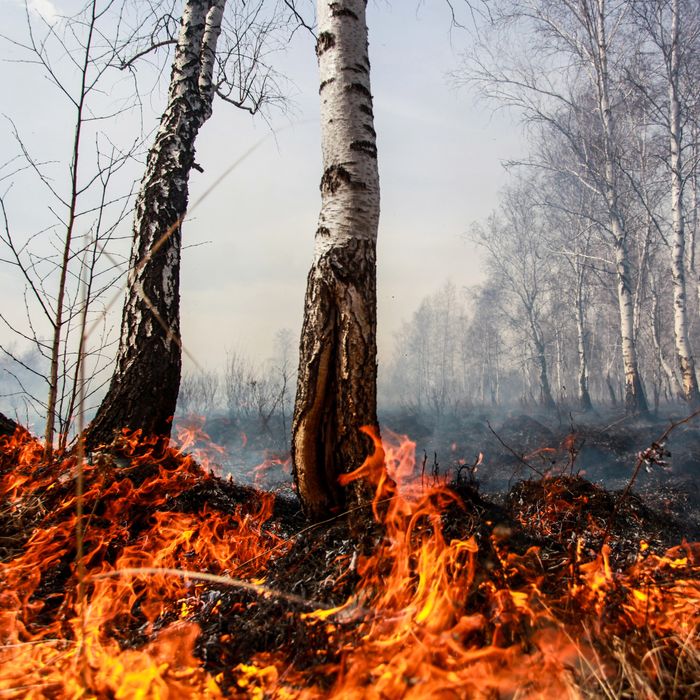By Bridget Read@bridgetgillard

Photo: Kirill Shipitsin/TASS/Getty Images
Not that you don’t have a lot on your mind already, but may I suggest one additional topic of alarm for consideration: Siberia is on fire.
Siberia, the proverbial coldest place, situated way up at the top of the globe in the Arctic circle, is experiencing record warm temperatures, melting sea ice, and massive wildfires — changes to the environment that even the scientists most urgently tracking the climate crisis didn’t expect to see for another several decades. As New York’s David Wallace-Wells wrote of one town that hit triple-digit temperatures on June 20, “In a world without climate change, this anomaly, one Danish meteorologist calculated, would be a 1-in-100,000-year event.”
“We always expected the Arctic to change faster than the rest of the globe,” one researcher told the Washington Post. “But I don’t think anyone expected the changes to happen as fast as we are seeing them happen.” Siberian towns are experiencing a heat wave throughout the region, with many smashing centuries-old temperature records, records that are now being broken year after year. Scientists say that the area is warming at three times the rate of the rest of the world, due to a phenomenon called “Arctic amplification,” in which melting ice exposes more dark sea and lake waters, turning zones that were once net heat-reflecting into heat-absorbing. And temperatures rise even more.
The effects of that increase are myriad and terrifying. Melting snow creates dry vegetation for wildfires, which have reached record levels this summer, sending out giant plumes of smoke and releasing more greenhouse gases than ever before. Some of these are troublingly named “zombie fires,” which don’t actually go out in winter, but burn under the snow and ice only to erupt in the air once again once the snow melts. People in Siberia are at risk of infrastructure collapse as towns built for the cold strain under new, extreme conditions while the melting of Arctic ice contributes to sea level rise and irregular weather patterns around the world. Perhaps scariest is the potential calamity of total permafrost melting: Permafrost is a layer of continuous ice that covers nearly a quarter of the land mass in the Northern Hemisphere, in which approximately 1,460 billion to 1,600 billion metric tons of organic carbon are trapped. That’s more than twice the amount of carbon currently in the atmosphere. If, with previously stable permafrost subject to never-before-seen heat, it is released, we could reach a tipping point beyond human intervention.
With much of the world consumed by the coronavirus pandemic, and with the United States engaged in a reckoning on racial injustice on top of reaching a record number of virus cases, temperature records in Siberia might seem like a faraway problem. But seemingly separate crises are not so disconnected; studies recently show, for example, how warming affects poor pregnant women in the U.S., and Black expecting mothers in particular, a disparity that will get even worse as warming continues. “When we develop a fever, it’s a sign. It’s a warning sign that something is wrong, and we stop and we take note,” a Colorado-based Arctic researcher said to the Post. “Literally, the Arctic is on fire. It has a fever right now, and so it’s a good warning sign that we need to stop, take note and figure out what’s going on.
No comments:
Post a Comment